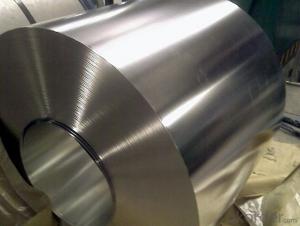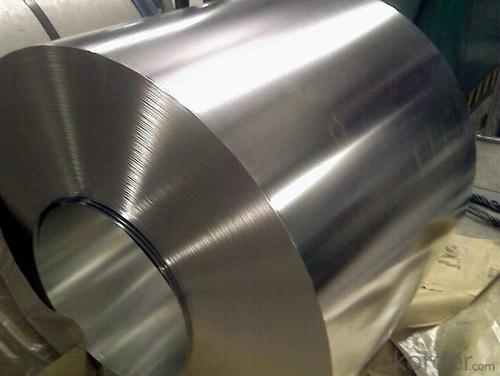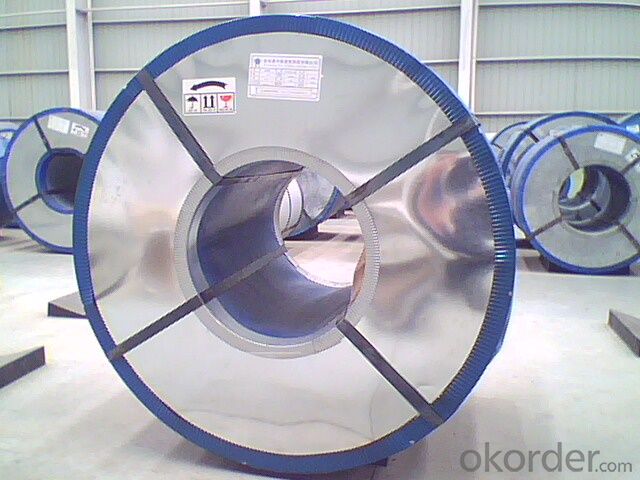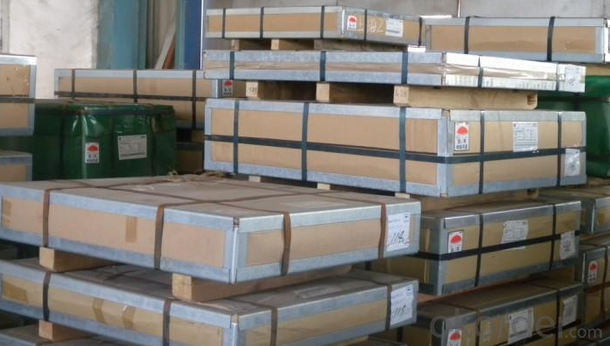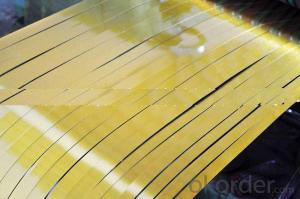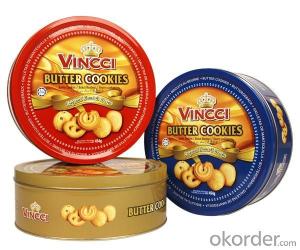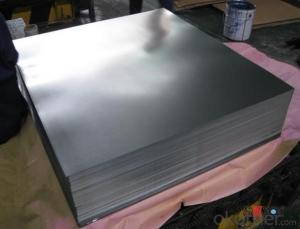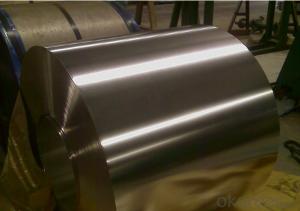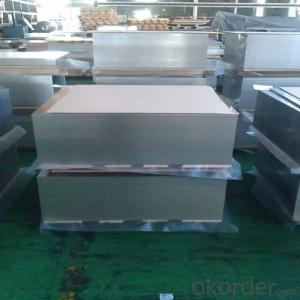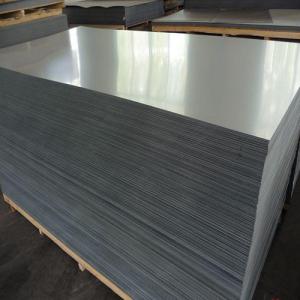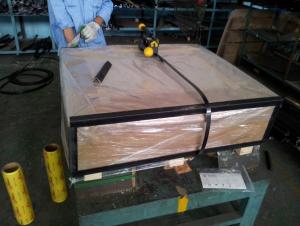Electrolytic Tinplate (ETP) Coil and Sheets for Chemical Packaging
- Loading Port:
- Tianjin
- Payment Terms:
- TT OR LC
- Min Order Qty:
- 25 m.t.
- Supply Capability:
- 7000 m.t./month
OKorder Service Pledge
OKorder Financial Service
You Might Also Like
1.Electrolytic Tinplate (ETP) Coil and Sheets for Chemical Packaging Description
Electrolytic Tin Plate Coils and Sheets for Foods Metal Packaging, is one thin steel sheet with a coating of tin applied by electrolytic deposition. Tinplate made by this process is essentially a sandwich in which the central core is strip steel. This core is cleaned in a pickling solution and then fed through tanks containing electrolyte, where tin is deposited on both sides. As the strip passes between high-frequency electric induction coils, it is heated so that the tin coating melts and flows to form a lustrous coat.
2.Main Features of the Electrolytic Tinplate (ETP) Coil and Sheets for Chemical Packaging
Appearance – Electrolytic Tin Plate is characterized by its beautiful metallic luster. Products with various kinds of surface roughness are produced by selecting the surface finish of the substrate steel sheet.
Paintability and printability – Electrolytic Tin Plates have excellent paintability and printability. Printing is beautifully finished using various lacquers and inks.
Formability and strength – Electrolytic Tin Plates have got very good formability and strength. By selecting a proper temper grade, appropriate formability is obtained for different applications as well as the required strength after forming.
Corrosion resistance – Tinplate has got good corrosion resistance. By selecting a proper coating weight, appropriate corrosion resistance is obtained against container contents. Coated items should meet 24 hour 5 % salt spray requirement.
Solderability and weldability – Electrolytic Tin Plates can be joined both by soldering or welding. These properties of tinplate are used for making various types of cans.
Hygienic – Tin coating provides good and non toxic barrier properties to protect food products from impurities, bacteria, moisture, light and odours.
Safe – Tinplate being low weight and high strength makes food cans easy to ship and transport.
Eco friendly – Tinplate offers 100 % recyclability.
Tin is not good for low temperature applications since it changes structure and loses adhesion when exposed to temperatures below – 40 deg C.
3.Electrolytic Tinplate (ETP) Coil and Sheets for Chemical Packaging Images
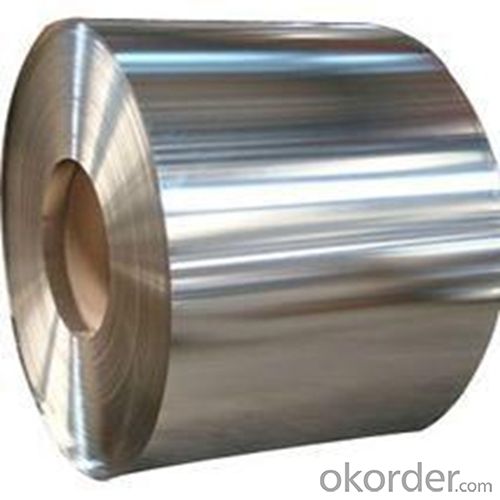
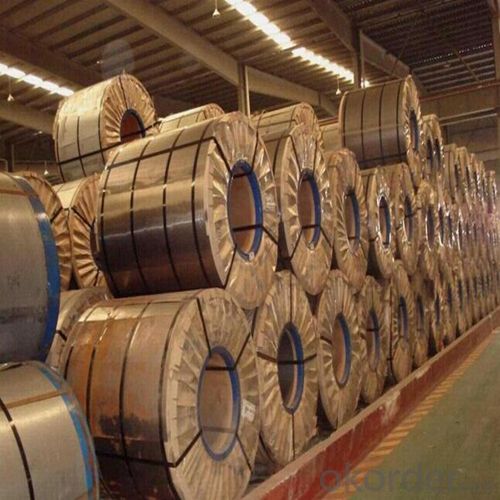
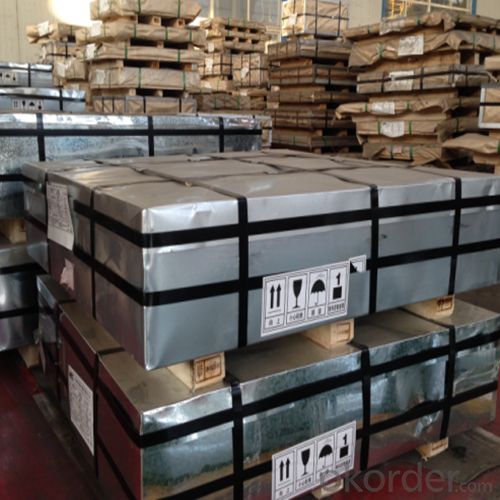
4.Electrolytic Tinplate (ETP) Coil and Sheets for Chemical Packaging Specification
Standard | ISO 11949 -1995, GB/T2520-2000,JIS G3303,ASTM A623, BS EN 10202
|
Material | MR,SPCC |
Thickness | 0.15mm - 0.50mm |
Width | 600mm -1150mm |
Temper | T1-T5 |
Annealing | BA & CA |
Coil Inner Diameter | 508mm |
Weight | 6-10 tons/coil 1~1.7 tons/sheets bundle |
Passivation | 311 |
Oil | DOS |
Surface | Finish,bright,stone,matte,silver |
5.FAQ of Electrolytic Tinplate (ETP) Coil and Sheets for Chemical Packaging
- How are the Electrolytic Tin Plates specified?
The Electrolytic Tin Plates are specified as per the steel base, extent of tempering, the coating weight, annealing method and the surface finish.
- How many types there are for base steels?
The base steels are of three types: Type MR, L, D
-How to place .an order or contact you ?
Please send us Email. we will give you a quick response in seconds .
- How is your quality ?
All our quality is prime even the secondary quality . We have many years experience
In this field with serious quality control standard . Advanced equipment, We welcome your visit to our factory .
- Q: What are the main applications of tinplate?
- The main applications of tinplate include food and beverage packaging, aerosol cans, electrical components, and decorative items.
- Q: How is tinplate coated with organic coatings?
- Tinplate is coated with organic coatings through a process called coil coating. In this process, the tinplate is cleaned and pre-treated to ensure proper adhesion of the coating. Then, a thin layer of organic coating is applied onto the surface of the tinplate using various methods such as roller coating or spraying. The coated tinplate is then cured at high temperatures to ensure the coating adheres firmly. This organic coating provides protection against corrosion and enhances the appearance of the tinplate.
- Q: What are the typical finishing options for tinplate products?
- The typical finishing options for tinplate products include tin plating, lacquering, lithography, embossing, and varnish coating.
- Q: What are the main countries producing tinplate?
- The main countries producing tinplate are China, Japan, South Korea, and the United States.
- Q: What are the different printing techniques used on tinplate?
- There are several different printing techniques used on tinplate, including lithography, screen printing, and offset printing. Lithography involves creating an image on a flat surface, such as a metal plate, and then transferring that image onto the tinplate. Screen printing involves using a mesh screen to apply ink onto the tinplate in a desired pattern or design. Offset printing involves transferring an image from a plate onto a rubber blanket, and then onto the tinplate. Each technique has its own advantages and is chosen based on factors such as cost, complexity of the design, and desired quality of the print.
- Q: How does tinplate contribute to the protection of musical instruments?
- Tinplate contributes to the protection of musical instruments by providing a durable and corrosion-resistant coating, which helps prevent rust and damage caused by moisture and environmental factors. Additionally, tinplate can be used in the manufacturing of instrument cases, offering a lightweight yet strong material that safeguards instruments during transportation and storage.
- Q: Can tinplate packaging be used for medical products?
- Yes, tinplate packaging can be used for medical products. Tinplate is a durable and versatile material that provides excellent protection against moisture, light, and oxygen. It is commonly used for pharmaceuticals, medical devices, and sterile supplies. Tinplate packaging is known for its ability to maintain product integrity and extend shelf life, making it a suitable choice for medical products.
- Q: What are the common testing methods for tinplate?
- Common testing methods for tinplate include visual inspection, thickness measurement, hardness testing, adhesion testing, corrosion resistance testing, and coating weight measurement.
- Q: What are the safety considerations when handling tinplate?
- When handling tinplate, it is essential to consider several safety measures. First, tinplate can have sharp edges, so wearing gloves and using appropriate tools is important to avoid cuts or injuries. Secondly, tinplate is often coated with various substances, such as lacquer or resin, which may contain harmful chemicals. Therefore, it is crucial to handle tinplate in well-ventilated areas and wear protective equipment like goggles and masks to minimize exposure. Additionally, tinplate can be heavy and bulky, so proper lifting techniques should be employed to prevent strains or back injuries. Lastly, storing tinplate in a dry and clean area can help prevent corrosion and maintain its structural integrity.
- Q: How does tinplate contribute to food safety?
- Tinplate contributes to food safety as it acts as a protective barrier between the food and the metal surface, preventing any interaction or contamination. Additionally, tinplate is resistant to corrosion and can withstand high temperatures, ensuring the integrity of the packaging and preventing any potential bacterial growth or spoilage.
Send your message to us
Electrolytic Tinplate (ETP) Coil and Sheets for Chemical Packaging
- Loading Port:
- Tianjin
- Payment Terms:
- TT OR LC
- Min Order Qty:
- 25 m.t.
- Supply Capability:
- 7000 m.t./month
OKorder Service Pledge
OKorder Financial Service
Similar products
Hot products
Hot Searches
Related keywords
